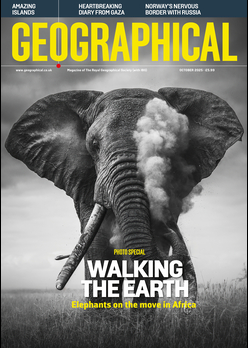
Rare earths are the world’s most in-demand elements. Marco Magrini reports on the battle for their future — and ours


There’s some turmoil around the centre of the Periodic Table. The lanthanides – a string of 15 elements that have become the focus of geopolitical wrangling and strategic disputes. Thanks to their unique magnetic, catalytic and luminescent properties, they’re the unsung heroes of the clean-energy revolution (and of a number of other advanced technologies).
Better known as ‘rare earth elements’, they’re not rare at all – they’re just unevenly distributed around the planet, dispersed across countless types of minerals, often in minimal proportions. Their mining is complicated and their refinement is expensive – here lies their ‘rarity’. To name a few: neodymium and praseodymium are fundamental to the production of high-performance magnets for direct-drive generators in wind turbines. Dysprosium and terbium are crucial for the reliability of electric vehicle motors and large wind generators. Lanthanum is a key component in nickel-metal hydride batteries for hybrid EVs and energy-storage systems. Cerium is a polishing agent in the manufacturing of solar panels. Scandium and yttrium, which don’t belong to the lanthanide series, are also considered rare earths, raising the total count to 17 elements.
The silvery-white metals occupy positions 57–71 of the Periodic Table and a central role in today’s geopolitics. The recent US–Ukraine mineral deal – deemed necessary to secure Washington’s continued support for Kyiv in the war with Russia – concerns a broad number of different ores, but it includes rare earth deposits. In a tit-for-tat response to American tariffs, China imposed restrictions last April on the export of seven rare earth metals: any Chinese company must now get a special licence to export rare earths and magnets. Even the surprising American attempt to ‘buy’ Greenland – described as ‘an absolute necessity for national security and global freedom’ – has been linked to the vast reserves of rare earths (and much more) believed to lie beneath its eerily disappearing ice sheet.
These (un)diplomatic games over Nature’s elements, however, only marginally relate to the zero-emissions technologies so dear to this column. Rare earths are also crucial to military systems – think missile guidance and fighter jets. This is why the USA longs to control their supply, at least in theory. China is more than just a rare earths superpower: it holds about 65 per cent of the world’s reserves and 92 per cent of refining capacity. In 2024, China had already banned the export of germanium, gallium and antimony in retaliation for the US embargo on the most advanced GPU chips, made in Taiwan with American technology. In other words, a battle of the elements is underway – brutal, risky and unpredictable.
This clearly spells trouble for the future expansion of clean technologies. The International Energy Agency estimates that rare earth production may need to increase sevenfold by 2040 just to meet the clean-energy sector’s needs. Some projections suggest that demand for specific elements, such as neodymium and dysprosium, could significantly outstrip supply by 2030 and 2050. The USA, which ranks second with an estimated 15.5 per cent of the world’s reserves, has only one large mine in operation. Developing new mines and processing facilities can take ten years from discovery to full production. Could the expansion of wind energy and electric vehicles stumble because a handful of metals are in short supply?
Check out more Climatewatch from Marco Magrini…
But there’s more. There are also significant sustainability challenges. Myanmar, in third place for lanthanide reserves, has mining operations that are disastrous, to say the least (as reported in last month’s Geographical). An area the size of Singapore was deforested and the practice of injecting chemicals into the ground to extract minerals has contaminated aquifers. Even if safer techniques are adopted, the very idea of mining in the pristine Arctic to find and refine the tonnes of minerals needed for turbines and batteries designed to lower our carbon emissions doesn’t make much sense. The failure to recycle these precious elements from the electronics we discard is equally absurd. In 2022, a record 62 billion kilograms of e-waste was generated globally – yet just a tiny fraction was recycled.
The greatest progress on the road to decarbonisation has come not from political will but from the falling costs and rising performance of clean-energy technologies. The path remains extremely steep. It would be a misfortune if the battle of the elements made it impossible to speed up the climb.




